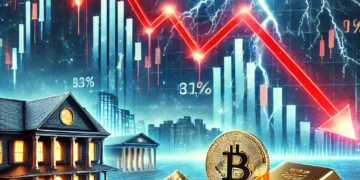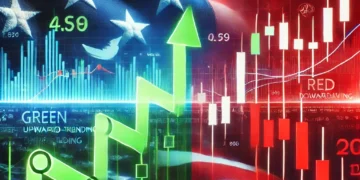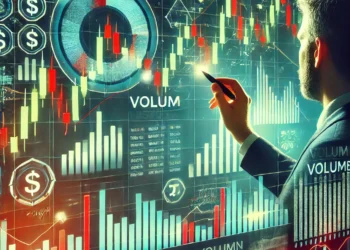The Psychology Behind Market Bubbles and Crashes: An In-Depth Exploration
The phenomena of market bubbles and crashes have been recurring themes throughout financial history, from the Dutch Tulip Mania in the 17th century to the Dot-com Bubble of the late 1990s and early 2000s, culminating in the 2008 Financial Crisis. These events, characterized by rapid escalation in asset prices followed by a sudden and catastrophic fall, offer profound insights into the psychological underpinnings of financial markets. This essay delves into the essence of market bubbles and crashes, unraveling the complex interplay of human psychology, economic factors, and market dynamics that fuel these phenomena.
Understanding Market Bubbles and Crashes
At their core, market bubbles represent a disconnection between the price of an asset and its intrinsic value, driven by exuberant market behavior. A bubble forms when speculation causes prices to rise beyond what fundamentals justify, fueled by the belief that future buyers will pay even higher prices. Crashes occur when reality sets in, and the bubble bursts, leading to a rapid depreciation in asset values, often resulting in widespread financial damage.
The psychology of market participants plays a pivotal role in the formation and bursting of bubbles. Behavioral finance theories suggest that cognitive biases and emotional reactions influence investor decisions, contributing to market inefficiencies and the cyclical nature of booms and busts. Key psychological factors include:
- Overconfidence: Investors overestimate their knowledge and predictive abilities, contributing to unrealistic expectations about future asset prices.
- Herd Behavior: Individuals follow the actions of the majority, leading to a bandwagon effect where buying begets more buying until the market reaches unsustainable levels.
- Loss Aversion: The fear of missing out on potential gains prompts investors to enter the market late, further inflating the bubble.
- Anchoring: Investors anchor their expectations to past price levels, failing to adjust their perceptions in light of changing fundamentals.
- Overoptimism: A general tendency to be overly optimistic about future financial prospects fuels speculative buying.
Identifying a Market Bubble: 5 Key Indicators
- Unsustainable Price Increases: Asset prices rise at a rate far exceeding historical norms and fundamentals, such as earnings or dividends.
- High Trading Volumes: A surge in trading activity often accompanies speculative frenzies, as more participants enter the market.
- Widespread Media Coverage: Intense media hype around certain assets or sectors can attract inexperienced investors, further driving up prices.
- Easy Credit Conditions: Easy access to credit can fuel speculative investments, as investors borrow to finance their purchases, contributing to price inflation.
- Divergence in Valuations: Significant disparities in valuations within the market, where some sectors or assets experience rapid price escalations while others do not, may indicate a bubble.
Market bubbles and crashes are complex phenomena that blend economic fundamentals, market dynamics, and, crucially, human psychology. The formation of a bubble is often a confluence of speculative fervor, easy credit, and widespread belief in ever-increasing asset prices, detached from the underlying economic reality. The psychological aspects—overconfidence, herd behavior, loss aversion, anchoring, and overoptimism—play a significant role in driving market participants’ actions during these periods.
Identifying a bubble requires vigilance and an understanding of key indicators such as unsustainable price increases, heightened trading volumes, widespread media hype, easy credit conditions, and divergent valuations. However, accurately predicting the timing of when a bubble will burst remains a formidable challenge, as market sentiment can maintain bubbles longer than rational analysis would suggest.
The aftermath of a crash is often marked by regulatory scrutiny, financial losses, and, importantly, a period of reflection and learning for market participants. The cyclicality of bubbles and crashes underscores the need for a deeper understanding of market psychology and more prudent investment strategies that consider long-term fundamentals over short-term speculative gains.
In conclusion, the interplay between psychology and market dynamics that underpins bubbles and crashes offers critical lessons for investors, policymakers, and economists. By recognizing the signs of market exuberance and approaching investment with caution and skepticism, individuals and institutions can mitigate the risks associated with these tumultuous periods. As financial markets continue to evolve, the historical precedents of bubbles and crashes serve as a reminder of the importance of balancing optimism with realism, speculation with analysis, and greed with prudence.
The Tulip Mania (1634-1637)
Regarded as one of the first recorded speculative bubbles, the Tulip Mania occurred in the Dutch Republic. Prices for tulip bulbs reached extraordinarily high levels, only to dramatically collapse. The mania was fueled by speculative investors who entered the market, driving prices to unsustainable levels without regard to the intrinsic value of tulips. The crash left many investors in financial ruin, highlighting the dangers of speculative excess and the herd behavior in financial markets.
The South Sea Bubble (1720)
The South Sea Company was granted a monopoly to trade in Spain’s South American colonies as part of a debt consolidation scheme for the British government. Speculation about the potential profits from trade led to rampant speculation and inflated stock prices. When it became clear that the expected trade revenues were not forthcoming, the bubble burst, leading to significant losses for many investors. This event underscored the risks associated with speculative trading based on unrealistic expectations.
The Great Crash of 1929
Marking the beginning of the Great Depression, the stock market crash of 1929 is one of the most catastrophic in history. Over the course of several days in October, stock prices plummeted, erasing billions of dollars in wealth. The crash was preceded by a period of rampant speculation during the “Roaring Twenties,” where easy credit and speculative investment inflated stock prices beyond sustainable levels. The 1929 crash illustrated the consequences of speculative excess and the impact of market crashes on the broader economy.
The Dot-com Bubble (1995-2000)
The late 1990s saw a surge in investments in internet-based companies, fueled by the rapid growth of the internet and expectations for new business models. Many companies saw their stock prices soar despite lacking profitable business models or even revenues. When investors began to re-evaluate the prospects of these companies, the bubble burst, leading to sharp declines in stock prices and the failure of many dot-com businesses. This bubble and crash highlighted the risks of investing in hype and the importance of fundamental business value.
The 2008 Financial Crisis
Triggered by the collapse of the housing bubble in the United States, the 2008 financial crisis led to significant market downturns globally. The crisis was rooted in high-risk mortgage lending practices, excessive borrowing, and complex financial products that obscured risk. The subsequent crash not only led to significant financial losses but also prompted widespread economic recession and led to critical evaluations of financial regulation and risk management practices.
Historical market crashes and hype bubbles serve as stark reminders of the complexities and risks inherent in financial markets. They underscore the importance of understanding market fundamentals, maintaining a cautious investment approach, and being mindful of the psychological factors that can drive market excesses. By studying these events, investors can better prepare themselves to navigate the volatile landscapes of financial markets and make
























